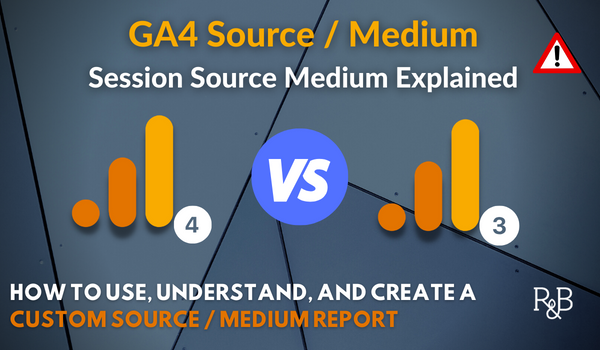Understanding Secondary Dimensions in Google Analytics: Their Value and Effective Use
Understanding Secondary Dimensions in Google Analytics: Their Value and Effective Use
Blog Article
Revealing the Impact of Additional Dimension in Google Analytics on Information Analysis and Insights
In the realm of information analytics, the application of second measurements within Google Analytics has actually arised as an essential device for removing deeper insights and unraveling complicated patterns that may otherwise remain covered. By peeling back the layers of main data sets, additional dimensions use a nuanced point of view that enhances the understanding of individual actions, website efficiency, and the effectiveness of advertising and marketing methods.
Discovering the Concept of Additional Measurements
Second measurements in Google Analytics provide additional insights by permitting individuals to analyze primary data in conjunction with an additional characteristic. By incorporating second measurements, customers can dive much deeper right into the data and reveal useful relationships that may or else go unnoticed - what is a secondary dimension in google analytics.
Understanding the principle of secondary measurements is vital for taking full advantage of the possibility of Google Analytics. It permits users to sector data efficiently, determine patterns, and make informed decisions based on a more total image of their analytics information. By checking out the different second dimensions offered in Google Analytics, individuals can open brand-new understandings and optimize their digital advertising and marketing efforts. Basically, secondary dimensions offer as a powerful device for boosting information evaluation and driving workable outcomes.
Enhancing Data Interpretation With Second Measurements
Having established the fundamental understanding of second measurements in Google Analytics and their essential role in information analysis, the emphasis now shifts towards leveraging these additional credit to improve the interpretation of analytics information (what is a secondary dimension in google analytics). By integrating additional dimensions right into data evaluation, analysts can get much deeper understandings into user habits, internet site efficiency, and advertising effectiveness

Additionally, second measurements help in contextualizing main data metrics by supplying added layers of information. This contextualization aids in understanding the 'why' behind the data trends, helping analysts make notified optimizations and decisions to boost overall performance. Eventually, incorporating additional dimensions enhances the information interpretation process, causing more purposeful understandings and strategic actions.
Uncovering Hidden Insights With Second Dimensions
Exploring the midsts of analytics information with secondary dimensions discloses valuable understandings that would certainly or else remain covered. By incorporating additional dimensions in Google Analytics, companies can unearth hidden patterns, patterns, and correlations that provide an even more thorough understanding of customer habits and internet site performance. These added layers of information allow analysts to delve much deeper into the key measurements, such as website traffic sources or landing web pages, and get an extra nuanced viewpoint on exactly how various variables engage with each various other.
Through making use of additional dimensions, analysts can segment and compare information throughout numerous measurements, enabling them to identify certain elements that affect user involvement, conversion prices, and total success metrics. For instance, by pairing the main measurement of 'device category' with the second measurement of 'age group,' marketing experts can try this out pinpoint which age demographics prefer accessing the internet site via mobile devices versus desktops. This level of granularity equips companies to make data-driven decisions and enhance their methods for far better outcomes. Ultimately, uncovering covert understandings via second measurements improves the depth and precision of information analysis, resulting in even more informed decision-making and improved performance results.
Leveraging Secondary Measurements for Actionable Analytics
Building upon the More hints understandings introduced via second dimensions in Google Analytics, companies can currently harness this enriched information landscape to drive actionable analytics and critical decision-making. By leveraging second measurements, companies can dive deeper right into their information to draw out valuable patterns, fads, and connections that may have previously gone unnoticed. This deeper level of evaluation makes it possible for services to get a much more extensive understanding of customer actions, project performance, and general internet site effectiveness.
One key advantage of making use of secondary measurements for workable analytics is the capacity to section data based upon certain criteria. This division enables businesses to tailor their methods and campaigns to various audience groups, bring about more targeted and efficient advertising and marketing initiatives - what is a secondary dimension in google analytics. Additionally, second dimensions provide a more all natural view of customer communications, allowing companies to maximize their internet site material, design, and general individual experience
Making The Most Of Decision-Making With Additional Measurements
To boost critical decision-making in analytics, leveraging secondary dimensions in Google Analytics can provide an extra nuanced point of view on user behavior and project performance. By including secondary measurements right into information analysis, organizations can dig much deeper right into the specifics of their web site visitors' communications and interaction patterns. This extra layer of details enables an extra comprehensive understanding of just how various variables, such as demographics, tools, or web traffic sources, effect essential performance indicators.

Final Thought
In final thought, making use of second dimensions in Google Analytics plays an important role in improving information evaluation and revealing covert insights. By discovering this idea, one can get a deeper understanding of user behavior and make informed choices based upon workable analytics. Leveraging additional dimensions permits an extra detailed analysis of information and maximizes the performance of decision-making browse around these guys procedures.

Report this page